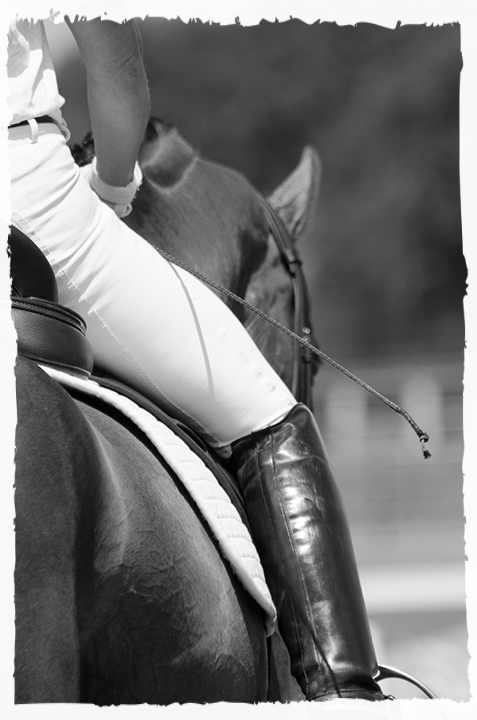CARE FOR YOUR SADDLE

"Each horse should have its own saddle. Just as a pair of shoes adapts to the wearer's foot, so the saddle adopts the contours of the horse."
-The Soceity of Master Saddlers
Saddle Fitting
Saddles101 has the ability to fit horses of many different widths and sizes, from high withered thoroughbreds to the wide warm bloods and wide backed ponies.
Heather takes pride in resolving soreness and performance issues for
the horse and rider, and she is passionate about educating people on
how a saddle fits, and the way each part contributes to the fit.
Heather is a Qualified Saddle Fitter for the Society of Master
Saddlers in the UK. This recognized qualification shows her dedication
to the industry, and allows her to give better quality and service to
her clients. As a Society member, she follows a strict code of conduct
to protect clients and other society saddle fitters.

When fitting for a custom saddle, Saddles101 inquires as to the rider’s needs and measurements, such as:
Other important factors come into play,
such as:
It is essential for optimum performance and care to understand these seven points of saddle fitting:
1. The gullet width runs along the center of the underside of the saddle and above the backbone. The correct width will allow for adequate clearance over the spine. The saddle should sit around the spinal column, resting on the fat and muscle with no pressure on the spine.
2. Adequate clearance through the pommel. The pommel shouldn’t be lying down on the horse and it shouldn’t pinch.
2. Adequate clearance through the pommel. The pommel shouldn’t be lying down on the horse and it shouldn’t pinch.
3. The angle of the tree. It runs alongside the horse’s body and should follow the angle of the body.
4. Point pressure applies to the bottom of the tree. It shouldn’t press into the sides of the horse, but should lie along the horse’s sides.
5. The balance of the saddle is most important to the rider. When the saddle is balanced, it allows the rider to sit over the top of his/her legs, which gives the rider the best equitation.
6. The panel coverage on the underside of the saddle should cover as much of the horse as possible in order to evenly distribute the weight of the rider. The saddle should continuously connect with the horse without gaps or bridges, and it should not rock from front to back.
7. The final point is in reference to the location of the 18th rib on the horse. Due to the lack of structural support beyond this rib, it would be very uncomfortable for the horse to carry weight this far back, therefore; the saddle should not go beyond this point.
Your horse changes shape often and the frequency of these changes will relate to his age, training, health and management. Try to recognize these changes, and have your saddle checked, and any necessary adjustments made at least yearly. It may be possible to adjust your existing saddle to fit your new horse, but the advice of a qualified saddle fitter should always be considered.
FLOCKING
Great attention must always be paid to the condition of the saddle
flocking. Irregular, uneven or lumpy flocking can cause pressure points
that may seriously damage the horse's back. Severe irregularity in the
flocking can cause the saddle to sit to one side. Correct flocking
provides a cushioning effect that helps to reduce trauma. Over stuffed,
the saddle will be hard and will not adapt to the horse's back and may
cause pressure points or sensitivity. It is possible to re-flock
your existing saddle, but only if it is wool stuffed and not stuffed
with foam. Saddles101 can provide this service on-site. However, if you
need to convert from foam to wool or need tree adjustments, such as
having it widened, Saddles101 can provide this service off-site.
ON THE DAY OF THE FITTING
Once you decide you would like a custom saddle, Heather will make
arrangements to meet with you and your horse. At this meeting, she will
gather needed information about you and take your horse’s measurements.
She will trace your horse’s back to find the proper fit, and bring
sample saddles for you to try. First, the samples will be placed on a
fitting horse for you to sit on and decide which ones you want to try
out on your horse. Then, when your selection is narrowed down, she will
make adjustments to the samples so they can be used on your horse. You
can ride in as many of the samples as you wish until you find the one
that is right for you. Finally, once the selection is made, she will
order the tree and seat according to your requirements and your horse’s
measurements.
Planning ahead and providing the 'right' facilities helps the saddle fitter give you the best possible services. The following accommodations can help during saddle fittings (if possible):
Your new saddle will arrive within approximately four to six weeks depending on stock. It will be delivered to you and adjustments will be made to the flocking if necessary. Your new saddle will need to be readjusted within 90 days of delivery as the wool will settle and compress as the saddle is ridden in and used.






